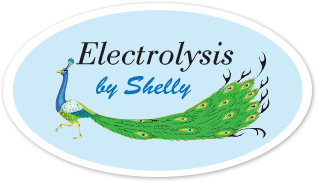Are Sunspots Serious or Harmless?

Are Sunspots Serious or Harmless?
I was attending an All British Classic Car Show at VanDusen Botanical Garden in Vancouver on Saturday. My sister had entered her late husband’s 1966 MGB-GT for its very first showing. The weather was perfect for this special day. Family and friends came out to be a support.
A Friend Asked a Question
One particular friend asked me what I do for work. I explained to her that I permanently remove hair by way of Electrolysis and Laser. I explained that the laser I work with does facial rejuvenation (eliminates fine lines, shrinks pores, encourages collagen production). It also removes brown spots and spider veins.
She proceeded to ask me a question: Why do brown spots show up on my forehead then the next day its not on my forehead, but I have one on my cheek? What is causing this to happen? I would be interested in getting them treated with laser.
I thought I would dive in and answer her question, but also share my answer for anyone else wondering why this is happening to them.
Solar Lentigines or Liver Spots
Solar lentigines or liver spots, also called sunspots, vary in size, and appear on the areas of skin most exposed to sunlight, face, hands, shoulders, upper back, and arms. They are a sign your skin is attempting to protect itself from more sun damage. Sunspots are caused by overactive pigment cells. They are more common in adults 50 years or older.
Lentigines or Lentigo Appear and May Disappear
Lentigines or lentigo can appear and disappear, but usually they stay. They are not itchy or painful. They are also not dangerous and are non-cancerous. Some people choose to have lentigines removed because they dislike how they look on their skin. This is a cosmetic choice and not a medical choice. Although lentigines are usually harmless.
When to See a Doctor
Age spots don’t require medical care. Have your doctor look at spots that are black or changed in appearance. Have a doctor evaluate if the spot:
- Is black
- Is increasing in size
- Has an irregular border
- Has an unusual combination of colour
- Is bleeding
Recommended Treatments
Recommendations for treatments:
- Chemical peels
- Freezing (cryotherapy) to destroy melanocytes
- Bleach creams (retinoids)
- Laser – to destroy melanocytes
Prevention of Lentigo
To prevent lentigo, try to avoid sun exposure, especially during peak sun periods between 10:00 am and 4:00 pm. When outside wear sunscreen UVA/UVB protection. Use sunscreen 30 SPF and higher. Apply 30 minutes before going outside and reapply every 2 hours.
If lentigines are appearing on your skin, you now know they can be removed easily. However, to avoid further lentigines appearing, continue to be aware of sun exposure peak times and take precautionary measures to protect your skin.
